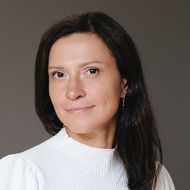HSE University Researchers Develop First Standardized Russian-Language Test for Aphasia-related Disorders

Researchers from the HSE University Centre for Language and Brain have created and standardized a new test battery for diagnosing language disorders in people with brain damage. The test is the first standardized assessment tool in Russia in the field. The paper entitled ‘The Russian Aphasia Test: The first comprehensive, quantitative, standardized, and computerized aphasia language battery in Russian’ has just been published in the PLOS ONE journal.
Historically, clinicians in Russia have used qualitative methods to diagnose speech and language disorders. These tools require a high level of skill from the specialists using them, and it is difficult to compare assessment results to each other or use them in research. The small number of quantitative surveys used to assess speech were developed quite a long time ago, and often do not meet modern standards for assessment instruments.
Aphasia is one of the language disorders that lacks a standardized Russian test. People with aphasia can have difficulty understanding others’ speech, producing words and sentences, and writing. Aphasia is most often caused by a stroke or a brain injury.
A team of researchers from HSE University has addressed this lack of a valid Russian methodology for evaluating and diagnosing aphasia by developing and testing the Russian Aphasia Test (RAT). This new tool utilizes modern neurolinguistic models and has been designed in accordance with psychometric requirements for this type of diagnostic batteries.
The test was validated in a group of 106 healthy participants and 85 individuals with aphasia. Each participant was assessed with the new test on a tablet. As expected, the healthy subjects had no difficulties with the test. The results of patients with aphasia accurately reflected their diagnoses, as well as specific linguistic deficits identified using qualitative methods in a clinical setting. These and other statistical tests conducted by the team of researchers demonstrate the validity and reliability of the test. The results obtained from the test subjects were also used to standardize the tool.
A validated test accurately measures what it intends to measure. Its results are consistent over time and vary among subjects exhibiting different levels of the parameter measured. Standardization is a separate procedure for identifying the test’s assessment norms based on the results of subjects from different groups. This makes it possible to compare each patient’s results to the same standard.
The fully developed version of the test allows specialists to assess aphasia in terms of three language functions: auditory language comprehension, repetition, and language production. Each of these functions is assessed at various linguistic levels, from the processing of individual sounds (phonemes), single words and sentences to the understanding and production of discourse. For example, in order to assess auditory language comprehension, subjects are asked to match the word or sentence they hear to a picture. The tasks to assess repetition involve repeating a nonword, word, or a sentence. Language production is assessed by asking participants to provide a verbal description of pictures. The test contains a total of 13 different subtests, each comprising of 8–24 items. On average, someone with aphasia takes 60–90 minutes to complete the whole test.
This kind of differential assessment affords a detailed profile of the patient’s linguistic deficits, consequently enabling the clinician to select the most optimal and effective course of treatment. The test is the first Russian diagnostic tool to be standardized in accordance with modern psychometric standards. The Russian Aphasia Test can be used both in clinical practice and in neurolinguistic studies of language.
In another first (both in Russia and the world), the test automates the assessment of aphasia. The test can be administered to patients using an app on a tablet, which then automatically scores performance on some of the subtests. The test examiner can use the device to assess the accuracy of completion of the remaining subtests, and the program will then specify the level of disorder severity for each language function.
‘The publication of this test is a landmark event in Russian aphasiology,’ explains Maria Ivanova, the head of the team behind the test, a research scientist at the Aphasia Recovery Lab at the University of California Berkeley, and a former research fellow of the HSE University Centre for Language and Brain. ‘We spent almost ten years working on this project. First, we developed the tasks and tested them on a small number of subjects. We selected the best of them and conducted large-scale data collection to validate and standardize the test. Alongside this, we developed an app capable of automating the presentation and scoring procedures. The last few years have been devoted to processing data and preparing the test materials for publication. The use of the test in clinical and research settings will take Russian aphasiology to a new level.’

Olga Dragoy, Director of the Centre for Language and Brain and co-author of the project
‘The Russian Aphasia test is the most outstanding clinical application created at the HSE University Centre for Language and Brain. It represents the latest in neurolinguistic knowledge, the best traditions of psychometrics, and modern technology. We believe that our tremendous effort will be of benefit to the field of speech-language disorders in Russia and set a global trend for language assessment tools.’
See also:
First Caucasus School on Experimental Research and Cognitive Sciences Takes Places in Adygea
On September 17–20, 2025, the First Caucasus School on Experimental Research and Cognitive Sciences took place at the Gornaya Legenda venue of Adyghe State University (ASU). The event was organised by the ASU Experimental Linguistics Laboratory, the HSE Centre for Language and Brain, and the HSE Centre for Sociocultural and Ethnolinguistic Studies. The school brought together over 50 participants—students, doctoral candidates, and early-career researchers from across Russia, along with lecturers and speakers from France, Serbia, China, Turkey, Kazakhstan, and Uzbekistan.
Software for Rapid Detection of Dyslexia Developed in Russia
HSE scientists have developed a software tool for assessing the presence and degree of dyslexia in school students based on their gender, age, school grade, and eye-tracking data. The application is expected to be introduced into clinical practice in 2024. The underlying studies were conducted by specialists in machine learning and neurolinguistics at the HSE AI Research Centre.
Researchers Have Developed a Russian-Language Method for the Preoperative Mapping of Language Areas
Neurolinguists from HSE University, in collaboration with radiologists from the Pirogov National Medical and Surgical Centre, developed a Russian-language protocol for functional magnetic resonance imaging (fMRI) that makes it possible to map individual language areas before neurosurgical operations. The study was published in Frontiers in Human Neuroscience.
Centre for Language and Brain Opens at HSE
The Centre stems from the International Neurolinguistics Laboratory and brings together researchers in clinical linguistics, special needs education, psycholinguistics, bilingualism, child speech, and gerontolinguistics. The Centre’s academic supervisor is Roelien Bastiaanse, Professor from the University of Groningen (the Netherlands), a researcher into clinical linguistics and founder of EMCL and IDEALAB, unique international educational programmes.
Center for Language and Brain Wins 3-Year Grant to Study Prevention, Diagnostics and Therapy of Language Disorders
The HSE Center for Language and Brain studies a broad range of topics related to the connection between the brain and language. For Svetlana Malyutina, Deputy Head, and Mariya Khudyakova, Junior Research Fellow, particularly interesting areas of focus include the breakdown of language processing after brain damage (e.g., stroke, neurosurgery, epilepsy) and language acquisition in children.
Unique Brain Surgeries and Electricity from Moss: HSE Scholars Present Their Discoveries at ONF Action Forum
At an exhibition held during the Russian Popular Front (ONF) Action Forum in Moscow, December 18-19, HSE neuro-linguists presented a method to preserve human speech after brain surgeries, and urbanists showcased sources of energy made of ceramics and moss.
'Surgery Needs to Preserve Brain Tumour Patients' Speech in Native Language’
As part of the HSE April Conference, Olga Dragoy, Head of HSE Center for Language and Brain (Neurolinguistics Laboratory), presented some of the cutting-edge methods of preventing speech disorders in Russian-speaking patients with brain pathology, including the first Russian-language intraoperative naming test developed by the laboratory. All test materials and instructions are available for free and can be used in clinical practice.
Fishing Easier Than Swimming
HSE researchers found different patterns of brain activity involved in processing instrumental and non-instrumental verbs.
HSE Researchers Expand on Neuroanatomical Model of Semantic Aphasia
For the last 70 years, it was largely believed that spatial processing disorders, including those seen in language, occurred when the temporal-parietal-occipital (TPO) junction of the brain’s left hemisphere was damaged. But according to researchers from the HSE Neurolinguistics Laboratory, it is the damages to the axonal fibers connected to this area of the brain that are most important.
Neurolinguistics Laboratory Informs Public about Aphasia
Staff members at the HSE Neurolinguistics Laboratory have developed an information booklet for families of people with aphasia - speech disorders caused by brain lesions.


